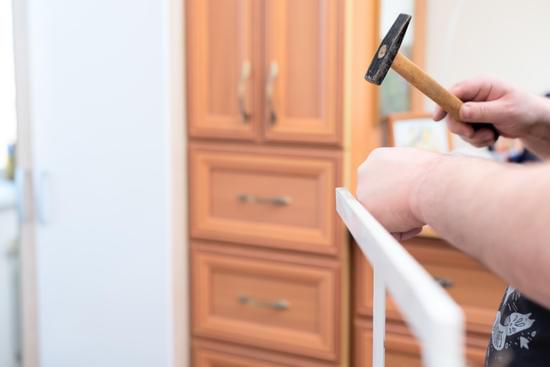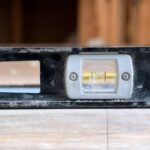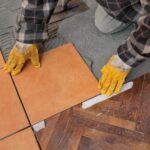Are you frustrated with slow internet speeds and constant buffering while trying to work, study, or stream your favorite shows at home? In this article, we will discuss “How to Improve Wifi Reception in Home” and provide valuable tips and tricks on how to enhance the strength and reliability of your wifi signal. With the increasing reliance on wireless connectivity for various activities, having a strong wifi reception at home has become more important than ever.
Assessing the current state of your wifi reception is the first step towards finding solutions to improve it. We will guide you through simple methods to check the strength of your wifi signal and understand the factors that may be affecting its quality.
From there, we will explore various strategies to enhance your home’s wifi reception, including re-positioning your router for optimal coverage, upgrading your equipment for better performance, and using wifi extenders or repeaters to amplify the signal throughout your space.
In addition to physical adjustments and hardware upgrades, we will also address potential sources of interference that could be disrupting your wifi reception. By implementing some basic troubleshooting techniques and establishing best practices for maintaining your router’s firmware and settings, you can significantly improve the overall performance of your home network. Join us as we delve into practical ways to ensure a reliable and robust wifi connection in your home.
Assessing the Current Wifi Reception
When it comes to improving wifi reception in your home, the first step is to assess the current strength of your wifi signal. This will help you understand the areas in your home where the signal may be weak and where it is strongest. By assessing your current wifi reception, you can make informed decisions about how to improve it.
Using a Wifi Analyzer App
One of the easiest ways to check the strength of your wifi signal is by using a wifi analyzer app. These apps are available for both Android and iOS devices and provide real-time information about the strength of your wifi signal. With a wifi analyzer app, you can walk around your home and identify areas with weak or strong signals, helping you determine the best placement for your router or additional equipment.
Conducting Speed Tests
Another method for assessing your current wifi reception is by conducting speed tests. There are several websites and apps that allow you to test the speed of your internet connection. By running these tests in different areas of your home, you can identify any potential dead zones or areas with slow internet speeds.
Checking Signal Strength on Devices
Most modern devices, such as smartphones and laptops, have built-in tools that allow you to check the strength of the wifi signal they are receiving. By checking the signal strength on different devices in various locations throughout your home, you can gather valuable data about where the signal may be weak or strong.
By utilizing these tips for assessing your current wifi reception, you can gain valuable insights into where improvements need to be made. This information will guide you in making informed decisions on how to improve wifi reception in your home.
Finding the Root Cause
Do you often experience slow internet speeds or dropped connections at home? If so, the issue may lie with your wifi reception. Understanding the factors that can affect the strength of your wifi signal is crucial in improving your internet experience. By identifying these common culprits, you can take steps to address them and enjoy better connectivity throughout your home.
Obstructions and Distance
One of the key factors that can impact wifi reception is physical obstructions and the distance between your device and the router. Thick walls, metal objects, and even large furniture can block or weaken the signal as it travels through your home.
Additionally, if your router is located far away from certain areas of your home, such as a basement or upper floor, these areas may receive a weaker signal. Understanding these obstacles will help you determine how to improve wifi reception in different areas of your home.
Interference From Other Devices
Another common factor that may affect wifi reception is interference from other electronic devices. Cordless phones, microwave ovens, baby monitors, and even Bluetooth devices can emit signals that interfere with your wifi signal. Additionally, if you live in a densely populated area with many neighboring networks, overlapping signals can also cause interference. Identifying potential sources of interference will allow you to take measures to minimize their impact on your wifi reception.
Outdated Equipment
In some cases, outdated equipment such as routers and modems may be the cause of poor wifi reception. Older models may not support newer technologies or have limited capabilities when it comes to broadcasting a strong signal. Assessing the age and performance of your current equipment will help you determine if an upgrade is necessary to improve your wifi reception at home.
Re-Positioning Your Router
When it comes to improving wifi reception in your home, the placement of your router plays a crucial role. The location of your router can greatly impact the strength and coverage of your wifi signal. To ensure that you are maximizing your wifi coverage, consider the following tips on how to properly position your router.
First and foremost, it is essential to place your router in a central location within your home. This allows for the wifi signal to reach all areas more effectively. Avoid placing the router near metal objects, concrete walls, large appliances, or other potential sources of interference. It is also recommended to elevate the router off the floor and keep it away from walls for optimal coverage.
Additionally, positioning the antennas of your router can also make a difference in improving signal strength. For routers with adjustable antennas, positioning one vertically and one horizontally can help broadcast the signal in all directions. Experimenting with different antenna positions can help determine which orientation provides the best coverage throughout your home.
Finally, consider investing in a wifi signal booster or extender if you have a large home or areas with poor connectivity. These devices can amplify the existing wifi signal and extend its range to reach distant corners of your home where the original signal may be weak.
| Wifi Reception Improvement Tips | Description |
|---|---|
| Central Location | Place router in a central location within your home |
| Avoid Interference | Avoid placing router near metal objects or large appliances |
| Signal Booster/Extender | Consider investing in these devices for larger homes or areas with poor connectivity |
Upgrading Your Equipment
When it comes to improving wifi reception in your home, one of the most effective steps you can take is upgrading your equipment. This includes both your wifi router and modem. Upgrading to the best possible equipment can make a significant difference in the strength and coverage of your wifi signal.
To choose the best wifi router and modem for improved reception, consider the following factors:
- Speed and range: Look for routers and modems that offer a high speed and extended range. This will ensure that you have a strong signal throughout your home, even in areas that were previously dead zones.
- Compatibility: Make sure that any router or modem you purchase is compatible with your internet service provider. You may also want to consider devices that are compatible with the latest wifi standards, such as Wi-Fi 6, for optimal performance.
- Multiple bands: Dual-band or tri-band routers can provide better performance by supporting multiple devices at once without sacrificing speed. Consider investing in a router with these capabilities for improved connectivity.
Additionally, it’s important to research different brands and models to find the best option for your specific needs. Reading customer reviews and seeking recommendations from tech experts can give you valuable insights into which routers and modems are known for their reliability, performance, and ease of use.
Ultimately, upgrading your equipment is an investment in better wifi reception at home. By choosing the right router and modem, you can significantly enhance the quality of your wireless network and enjoy seamless connectivity throughout your living space.
Make sure to keep these tips in mind when considering how to improve wifi reception in your home. With a simple upgrade of equipment, you can see a noticeable improvement in your wireless connection.
Using Wifi Extenders or Repeaters
Having a strong wifi signal throughout your home is essential for seamless internet connectivity. If you find that certain areas of your home have weak wifi reception, using wifi extenders or repeaters can be an effective solution to boost your wifi signal.
Wifi extenders, also known as wifi boosters or range extenders, are devices that pick up the existing wireless signal from your router and rebroadcast it, creating a second network. This extended network provides greater coverage and helps eliminate dead zones in your home where the wifi signal may be weak. On the other hand, wifi repeaters work by receiving the wireless signal from the router and then re-transmitting it to amplify the signal strength and expand coverage.
When considering using wifi extenders or repeaters, it’s important to strategically place them in areas where the wifi signal is still strong enough for them to capture and amplify. Additionally, it’s crucial to choose a device that is compatible with your current router and offers the appropriate coverage range for your home size.
In addition to extending the reach of your existing wifi network, some modern routers come with mesh networking capabilities, which work similarly to extenders but offer seamless roaming between different access points. Mesh networks create a single, large network rather than multiple separate networks like traditional range extenders. When properly configured, these devices can provide a more consistent connectivity experience as you move throughout your home.
| Device Type | Key Function |
|---|---|
| Wifi Extender | Rebroadcasts existing wireless signal to expand coverage |
| Wifi Repeater | Amplifies and re-transmits wireless signal to boost strength and coverage |
| Mesh Networking System | Creates a single, large network for seamless roaming between access points |
Eliminating Interference
Electronics and neighboring networks can often interfere with your wifi signal, causing slow speeds and spotty connections. To improve your wifi reception in your home, follow these tips to reduce interference from other electronic devices or neighboring networks:
- Change wifi channels: Many routers operate on the same frequency, which can lead to interference. By changing the channel on your router, you can avoid overlapping with other nearby networks and potentially improve your signal strength.
- Keep electronic devices away from the router: Microwave ovens, cordless phones, baby monitors, and other electronic devices can disrupt your wifi signal. Ensure that these devices are placed away from your router to minimize interference.
- Use ethernet connections when possible: For devices that are stationary and located near the router, consider using ethernet cables instead of relying on wifi. This reduces the demand on the wireless network and minimizes interference from other devices.
By implementing these strategies, you can minimize interference from other electronic devices or neighboring networks and improve the overall performance of your home wifi network. Remember that every home is different, so it may take some trial and error to find the best solution for your specific environment.
Remember that minimizing interference is just one aspect of improving wifi reception in your home. It’s also important to address other factors like router placement, equipment upgrades, and firmware updates to ensure a strong and reliable wifi connection throughout your living space.
Updating Firmware and Settings
To improve wifi reception in your home, one of the most crucial steps is to update your router’s firmware and adjust its settings. This ensures that your router is operating at its optimal capacity, thus enhancing the strength and stability of your wifi signal.
Firstly, it is important to regularly check for any available firmware updates for your router. Manufacturers often release updates to improve performance, security, and compatibility with newer devices. By keeping your router’s firmware up to date, you can ensure that it is functioning at its best, which can directly impact the quality of your wifi reception.
In addition to updating the firmware, adjusting your router’s settings can also make a significant difference in improving wifi reception. Common settings that may need attention include the wireless channel, bandwidth settings, and quality of service (QoS) options. By optimizing these settings based on your specific needs and environment, you can minimize interference and maximize the coverage and speed of your wifi signal.
Furthermore, consider implementing additional security measures such as enabling WPA3 encryption and setting up a strong password to prevent unauthorized access to your network. These security measures not only protect your network but also contribute to better overall performance by reducing potential security breaches that could impact wifi reception.
By following these guidelines on updating firmware and adjusting settings for better wifi reception, you can effectively enhance the quality of your home wifi network. Always remember that regular maintenance of your router is key to ensuring optimal performance.
Conclusion
In conclusion, having strong wifi reception at home is crucial for seamless internet connectivity and efficient use of various devices. By assessing the current wifi reception and finding the root cause of any issues, you can take steps to improve the situation. This may involve re-positioning your router, upgrading your equipment, using extenders or repeaters, eliminating interference, and updating firmware and settings.
Re-positioning your router to a central location and away from obstructions can significantly improve wifi coverage throughout your home. Additionally, choosing the best wifi router and modem for your specific needs can make a notable difference in signal strength and reliability. Wifi extenders or repeaters can also help boost your wifi signal to reach areas with weaker reception, while reducing interference from other electronic devices or neighboring networks is essential for maintaining a strong connection.
Lastly, regularly updating your router’s firmware and adjusting settings to minimize congestion on your network can further enhance your wifi reception at home. By implementing these strategies, you can ensure that you have a strong and reliable wifi connection throughout your entire household, allowing you to fully enjoy all of the benefits of modern technology. With these tips in mind, you can take proactive measures to improve wifi reception in your home and enhance your overall internet experience.
Frequently Asked Questions
How Can I Boost My WiFi Signal at Home?
Boosting your WiFi signal at home can be done in a few different ways. One option is to reposition your router to a central location in your home and away from any obstructions.
Using a WiFi extender or repeater can also help increase the range of your signal. Additionally, upgrading to a newer, more powerful router with better range and signal strength capabilities may be beneficial.
Why Is My WiFi Signal So Weak in My House?
There are several reasons why your WiFi signal might be weak in your house. It could be due to the distance between your device and the router, interference from other electronic devices, or physical barriers like walls and furniture blocking the signal. Additionally, older routers may not have the same level of performance as newer models.
Do WiFi Signal Boosters Work?
WiFi signal boosters can indeed work to improve the strength and range of your WiFi signal. They work by amplifying the existing signal and rebroadcasting it, effectively extending the coverage area of your WiFi network. However, it’s important to note that while they can improve coverage, they may not always address underlying issues such as interference or bandwidth limitations.

I’m thrilled to have you here as a part of the Remodeling Top community. This is where my journey as an architect and remodeling enthusiast intersects with your passion for transforming houses into dream homes.





